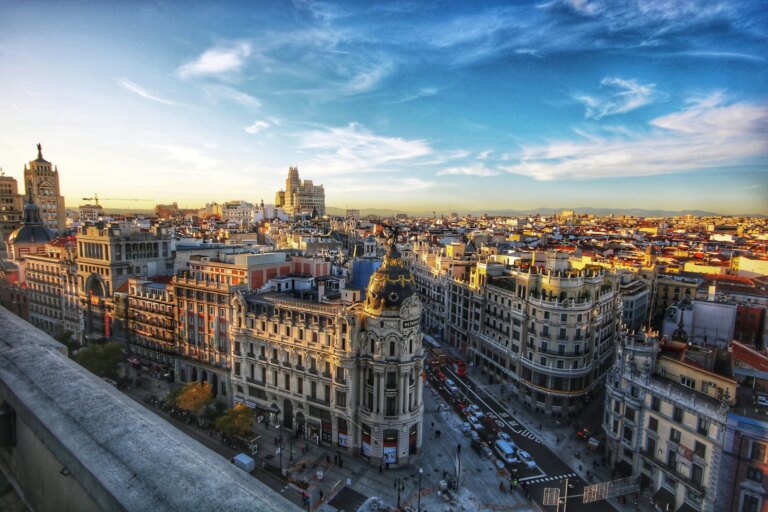Haruki Murakami is one of Japan’s greatest ever authors. As he turns 76, we celebrate his life and find out where to start with his superb body of work.
Haruki Murakami is one of the best-known names in modern literature. His work has been translated into a plethora of languages, connecting readers from around the world with his remarkable novels and non-fiction pieces.
As the author turns 76, he is still writing and still creating exceptional genre-spanning literature. His most recent novel, The City and Its Uncertain Walls, was published in Japanese in April 2023, and in English in November 2024.
If you’re not yet acquainted with Murakami and his work, there’s no time like the present to put that right. But where do you begin?
An Incredible Contribution to World Literature

Murakami was born in Kyoto, Japan in 1949. The impact of the war on his family would greatly influence Murakami’s life and work, as would the emergence of a new Japan in the advent of the conflict.
The seeds of literature were sown in Murakami from the moment he was born. Both his mother and father were teachers of Japanese literature, and the young Haruki would have grown up with the work of Natsume Sōseki and Tōson Shimizaki. But he grew up exposed to other work too, like Kafka, Flaubert, Dickens, and Dostoyevsky, all of whom would shape his writing habits and his artistry.

Murakami was 29 when he began writing in earnest. While running a coffee house and jazz club with his wife in Tokyo, he penned Hear the Wind Sing, his first novel. Submitting the novel to a literary contest, he was overjoyed to discover he had won first prize.
This success buoyed the author. Over the coming years, he wrote prodigiously, completing three more novels and a slew of short stories. As years stretched into decades, Murakami has gone on to write 15 novels, and counting, as well as non-fiction works like What I Talk About When I Talk About Running.
Where to Start with Murakami
When we approach an author we’ve never read before, it’s always tempting to start with the most famous works. But which of Murakami’s works are his most famous? This is a highly prolific, and incredibly highly-acclaimed, writer we’re talking about.

Perhaps it’s Norwegian Wood, Murakami’s first big international success. Named for The Beatles song of the same name, Norwegian Wood is arguably an excellent place to start. It’s a stunning introduction to the author’s sparkling prose and checks off many of the themes that weave themselves through his broader body of work.
While not linear in the traditional sense, the narrative of Norwegian Wood is a little easier to get a handle on than some of Murakami’s other novels. The work could be seen as a relatively gentle access point for those not yet accustomed to the author’s methods.

At the other end of the spectrum is The Wind Up Bird Chronicle. More than double the length of Norwegian Wood, this is a sprawling work in which narratives and timelines twist together in a mind-bending literary symphony.
It’s certainly not a gentle introduction to Murakami’s oeuvre. The traumatic influence of the Second World War is clearly in evidence throughout the novel, and some readers have found the graphic depiction of the fate of a Japanese prisoner of war to be simply too much to stomach. It’s also gloriously bizarre, as clairvoyance, mystery, and intrigue are played out across generations and time periods. Starting with The Wind Up Bird Chronicle is akin to jumping in at the deep end – sometimes the best way to learn how to swim.
1Q84 and Kafka on the Shore are other popular entrance points, although most readers probably begin with the more digestible short stories. For me personally, it was The Elephant Vanishes collection that was my first encounter with Murakami.
An Alternative Approach
Haruki Murakami is well-known for the motifs that crop up again and again in his work. While his novels deal with a broad array of subjects, some aspects are repeated. Cats appear in Murakami’s work a lot, as does jazz music, and spaghetti. While there is certain to be an artistic reasoning behind these choices, it’s also true that Murakami himself simply likes cats, jazz, and spaghetti.

He likes something else too – running, which brings us to another potential entry point. On finding himself physically unfit in his early 30s, Murakami took up running. He has gone on to complete a number of marathons and triathlons, and distance running is a big part of his life. So much so that he penned the non-fiction book, What I Talked About When I Talk About Running, in 2007.
The work is part memoir, part philosophical meditation on the power of physical exertion and challenge. If this appeals to you, it could be a good way to acquaint yourself with Murakami’s style and get a little closer to his motivations as an artist.
Celebrating Murakami

Released in English in 2024, The City and Its Uncertain Walls became an instant bestseller and garnered rave reviews from critics and readers alike. It’s proof, if proof be needed, that Murakami is still at the height of his powers, even midway through his eighth decade.
It also means that there are now 15 Murakami novels for you to get through, and that number is likely to grow even higher in the coming years. We’ve all got busy reading schedules, and getting through this much work is going to take some time – if you haven’t already begun your journey into Murakami’s spell-binding universe, make a plan to do so in 2025.

Join our community of 1.5M readers
Like this story? You'll love our free weekly magazine.








